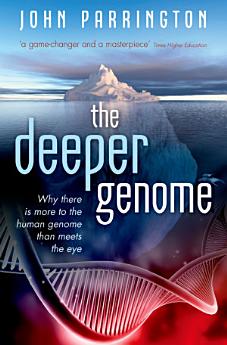The Deeper Genome: Why there is more to the human genome than meets the eye
Oct 2017 · Oxford University Press
Ebook
368
Pages
family_home
Eligible
info
reportRatings and reviews aren’t verified Learn More
About this ebook
Over a decade ago, as the Human Genome Project completed its mapping of the entire human genome, hopes ran high that we would rapidly be able to use our knowledge of human genes to tackle many inherited diseases, and understand what makes us unique among animals. But things didn't turn out that way. For a start, we turned out to have far fewer genes than originally thought — just over 20,000, the same sort of number as a fruit fly or worm. What's more, the proportion of DNA consisting of genes coding for proteins was a mere 2%. So, was the rest of the genome accumulated 'junk'? Things have changed since those early heady days of the Human Genome Project. But the emerging picture is if anything far more exciting. In this book, John Parrington explains the key features that are coming to light - some, such as the results of the international ENCODE programme, still much debated and controversial in their scope. He gives an outline of the deeper genome, involving layers of regulatory elements controlling and coordinating the switching on and off of genes; the impact of its 3D geometry; the discovery of a variety of new RNAs playing critical roles; the epigenetic changes influenced by the environment and life experiences that can make identical twins different and be passed on to the next generation; and the clues coming out of comparisons with the genomes of Neanderthals as well as that of chimps about the development of our species. We are learning more about ourselves, and about the genetic aspects of many diseases. But in its complexity, flexibility, and ability to respond to environmental cues, the human genome is proving to be far more subtle than we ever imagined.
About the author
John Parrington is an Associate Professor in Molecular and Cellular Pharmacology at the University of Oxford, and a Tutorial Fellow in Medicine at Worcester College, Oxford. He is the author of Redesigning Life (Oxford University Press, 2016), and has published over 80 peer-reviewed articles in science journals including Nature, Current Biology, Journal of Cell Biology, Journal of Clinical Investigation, The EMBO Journal, Development, Developmental Biology, and Human Reproduction. He has extensive experience writing popular science, having published articles in The Guardian, New Scientist, Chemistry World, and The Biologist. As a British Science Association Media Fellow he worked as a science journalist at The Times for 7 weeks where he published 22 articles. He has also written science reports for the Wellcome Trust, British Council, and Royal Society.
Rate this ebook
Tell us what you think.
Reading information
Smartphones and tablets
Install the Google Play Books app for Android and iPad/iPhone. It syncs automatically with your account and allows you to read online or offline wherever you are.
Laptops and computers
You can listen to audiobooks purchased on Google Play using your computer's web browser.
eReaders and other devices
To read on e-ink devices like Kobo eReaders, you'll need to download a file and transfer it to your device. Follow the detailed Help Center instructions to transfer the files to supported eReaders.








